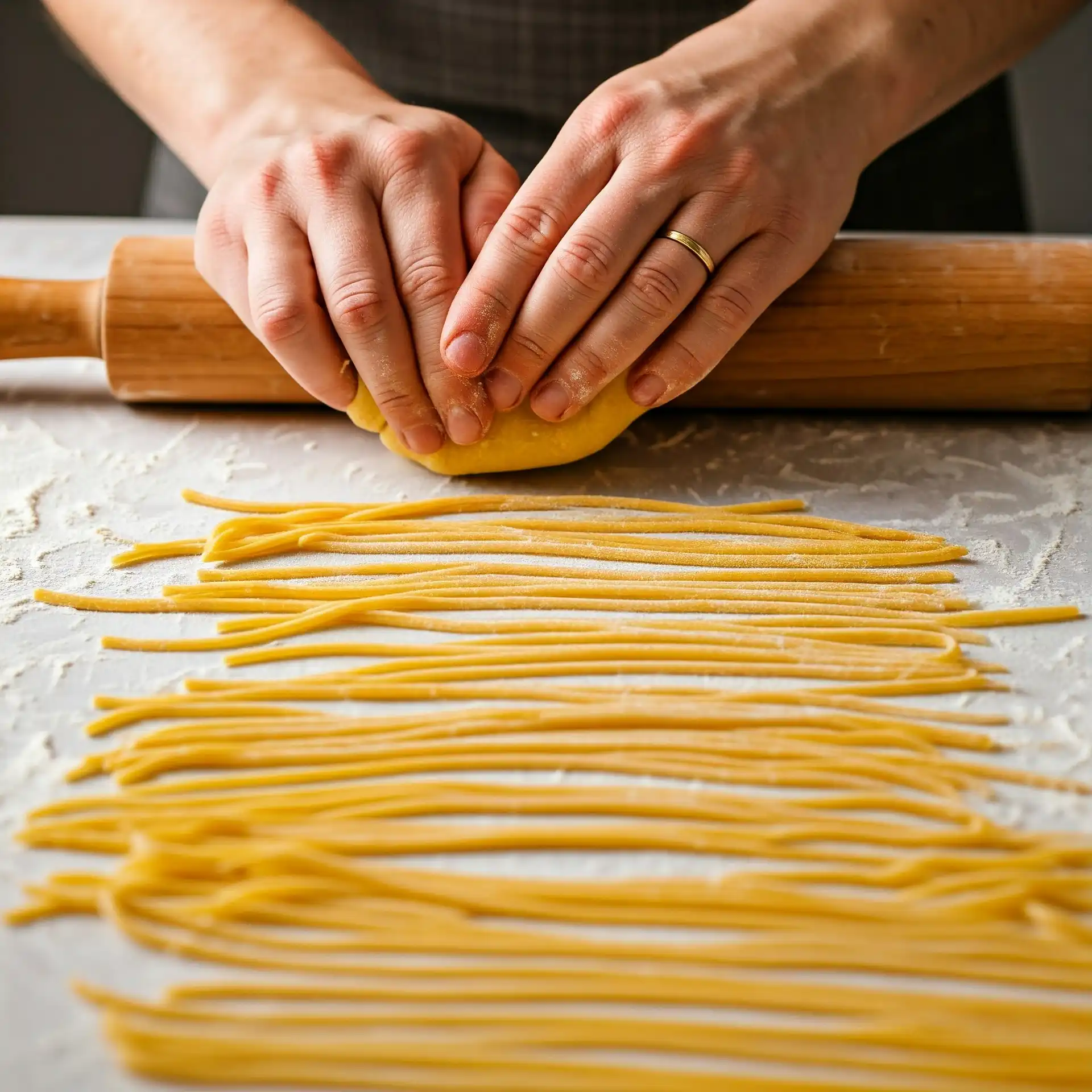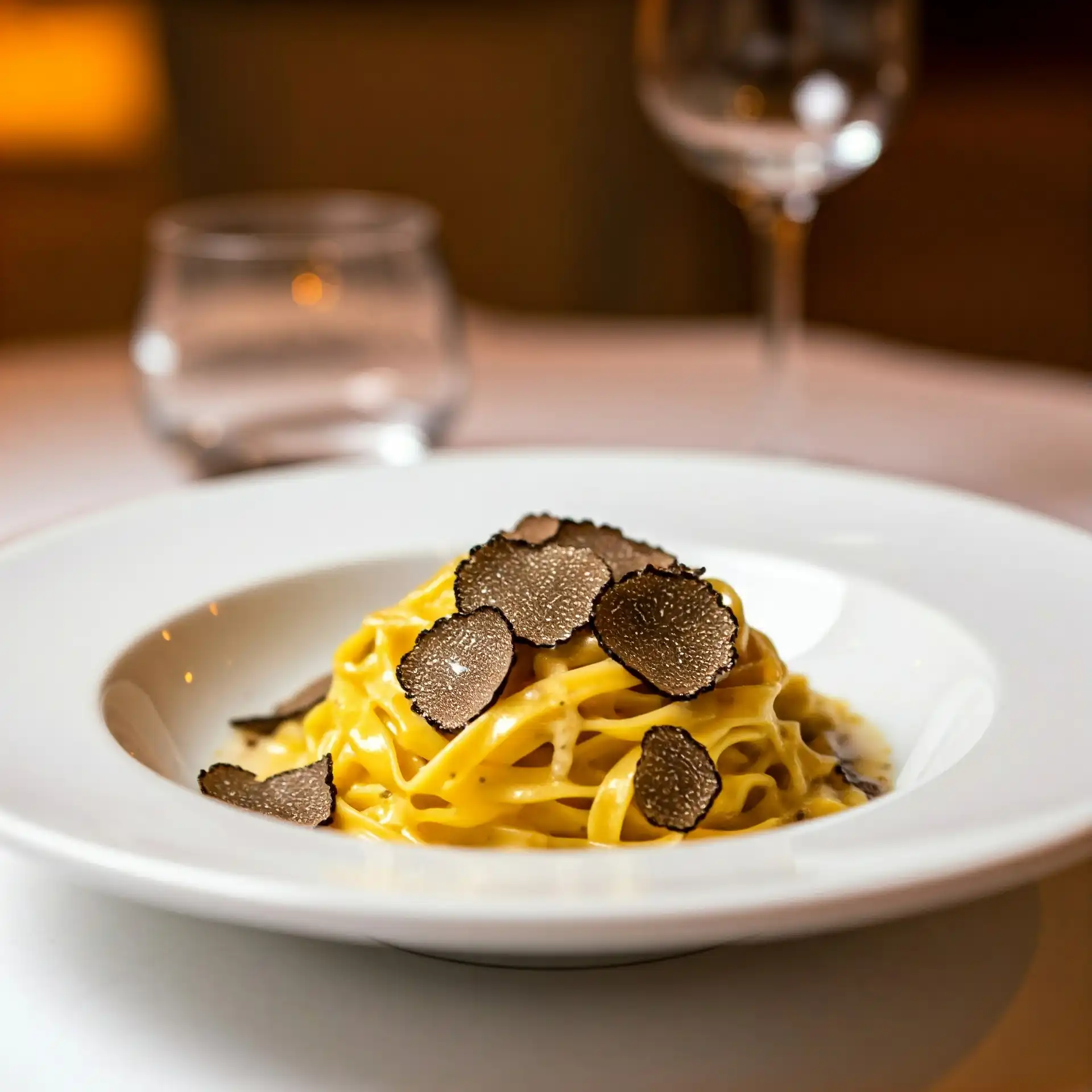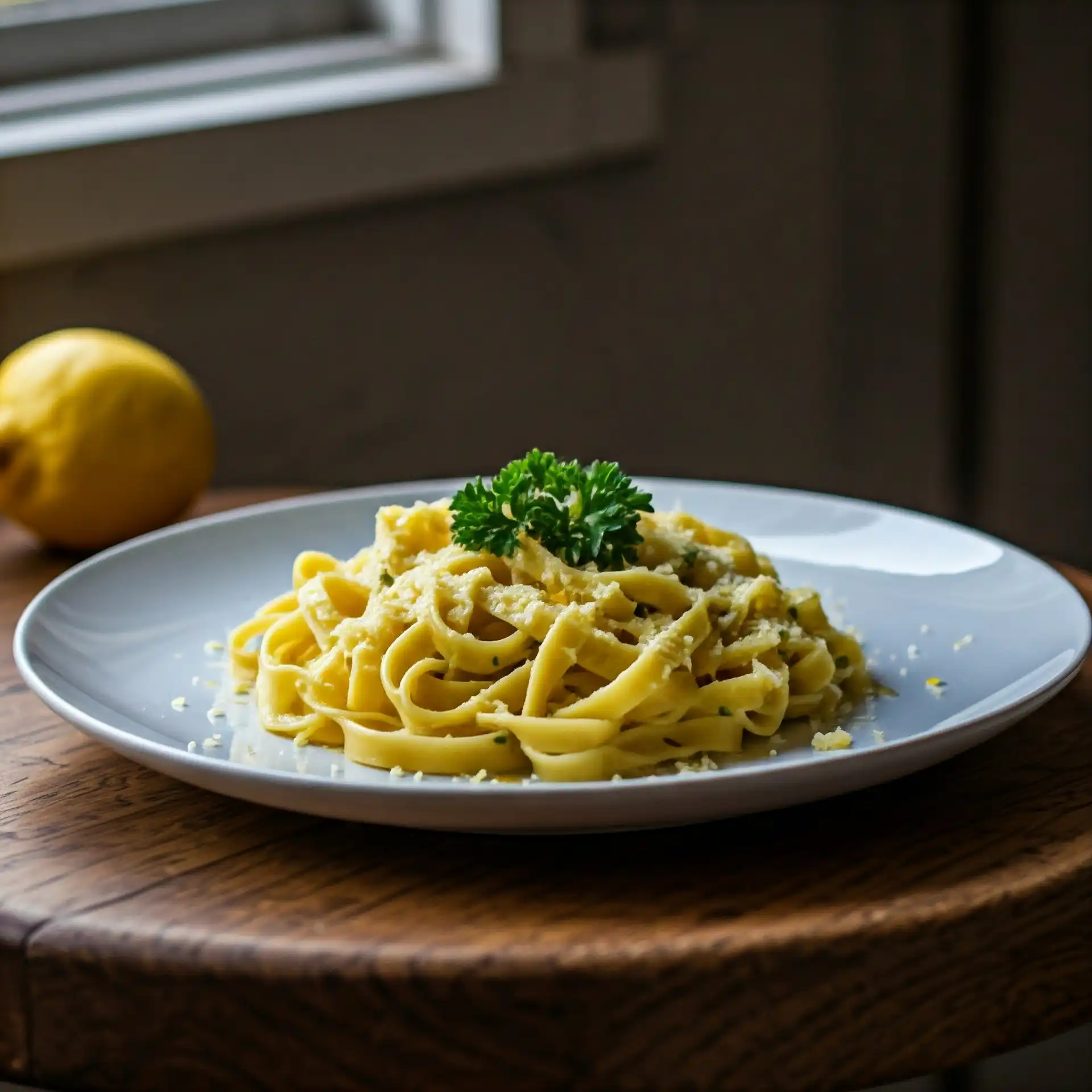Introduction:
When it comes to Italian cuisine, pasta reigns supreme. Among the plethora of shapes and sizes, tagliolini stands out for its delicate texture and culinary versatility. This thin ribbon pasta, a favorite in northern Italy, pairs beautifully with both simple and extravagant sauces, making it a staple in Italian kitchens and fine dining alike.
In this article, we’ll delve into the fascinating world of tagliolini. From its origins and preparation to mouthwatering recipes and nutritional benefits, this guide has you covered. Whether you’re a seasoned pasta aficionado or a curious beginner, there’s something here for everyone.
What is Tagliolini?
What Defines Tagliolini?
Tagliolini, pronounced “tah-lyo-LEE-nee,” is a type of ribbon pasta known for its long, thin strands. Typically around 2–3 millimeters wide, it sits somewhere between capellini (angel hair pasta) and tagliatelle in terms of thickness. Made primarily from a mix of durum wheat flour and eggs, this pasta boasts a silky texture and robust flavor that elevates any dish.
Unlike bulkier pastas, tagliolini cooks quickly, absorbing the flavors of its accompanying sauces with ease. Its delicate nature makes it an excellent choice for light, flavorful dishes, such as those with lemon or seafood.
Origins and Historical Background
The roots of tagliolini trace back to northern Italy, particularly in the Piedmont region. This pasta evolved as a local variation of tagliatelle, catering to diners who craved a thinner, more refined alternative. In traditional Italian households, tagliolini was a staple at family gatherings, paired with truffles, butter, or a splash of wine-infused sauce.
Interestingly, the name “tagliolini” stems from the Italian word tagliare, meaning “to cut.” The meticulous process of slicing the dough into thin strips is an art passed down through generations.
Comparison with Other Pastas
What sets tagliolini apart from its pasta cousins? While capellini is ultra-thin and often prone to clumping, tagliolini offers a firmer bite. Compared to tagliatelle, it’s less hearty, making it ideal for lighter sauces. This versatility has made tagliolini a favorite in both rustic and gourmet Italian cuisine.
Tagliolini’s adaptability ensures it can be dressed up with luxurious ingredients like truffles or kept humble with olive oil and garlic. Its middle-ground size and texture make it the perfect canvas for culinary creativity.
How to Make Tagliolini at Home

Ingredients for Homemade
Making tagliolini from scratch is a delightful culinary experience. This pasta only requires a few key ingredients:
- 2 cups of durum wheat or all-purpose flour
- 3 large eggs
- Optional: Spinach puree for added color and flavor
Durum wheat gives tagliolini its firm texture, making it ideal for holding sauces. If you’re gluten-free, substitute the flour with a mix of almond flour and gluten-free all-purpose flour.
Step-by-Step Preparation Process
- Form the Dough: Start by creating a mound of flour on a clean surface. Make a well in the center and crack the eggs into it. Gently beat the eggs with a fork, gradually incorporating the flour.
- Knead the Dough: Once combined, knead the dough for 10 minutes until smooth. Cover it with a damp cloth and let it rest for 30 minutes.
- Roll and Cut: Roll the dough into a thin sheet, about 1mm thick. Use a sharp knife or pasta cutter to slice the sheet into long strips, approximately 2–3mm wide.
- Cook the Pasta: Boil the tagliolini in salted water for 2–3 minutes. Fresh pasta cooks quickly, so don’t step away!
Tips for Perfect Tagliolini
- Ensure the dough is elastic but not sticky. If it’s too dry, add a teaspoon of water.
- Dust the rolled dough with flour before cutting to prevent sticking.
- Pair the pasta with light sauces to highlight its delicate flavor, like the lemon sauce in this Garlic Parmesan Pasta Recipe.
Popular Tagliolini Recipes

Tagliolini al Limone
A classic Italian dish, tagliolini al limone combines vibrant citrus with creamy butter. Start by melting butter in a pan, then add lemon zest and juice. Toss the cooked pasta in the sauce, finishing with grated Pecorino Romano. The result? A dish bursting with flavor yet light enough for any season.
with Black Truffles
This luxurious recipe requires only a few ingredients: butter, truffles, and freshly grated Parmesan. Melt butter over low heat, add shaved black truffles, and toss in the cooked tagliolini. Garnish with Parmesan for an earthy, decadent treat. Pair it with Nebbiolo wine to elevate your meal.
with Seafood
For seafood lovers, tagliolini pairs beautifully with clams, shrimp, or even lobster. Sauté garlic in olive oil, then add shellfish and white wine. Simmer until the seafood is cooked, and toss it with the pasta. The delicate ribbons soak up the briny sauce, creating a taste of the sea.
Sauces and Pairings
Classic Sauces for Tagliolini
One of the best things about tagliolini is its adaptability. Traditional Italian sauces beautifully complement its silky texture. A few classics include:
- Tomato Basil Sauce: A simple mix of fresh tomatoes, olive oil, garlic, and basil enhances the pasta’s natural flavor.
- Butter and Sage Sauce: Perfect for highlighting the pasta’s delicate nature, this sauce is made by gently melting butter and infusing it with fresh sage.
- Creamy Alfredo Sauce: A velvety mix of cream, Parmesan, and garlic creates a rich pairing for tagliolini.
Each of these options ensures your pasta dish is deliciously satisfying, whether served at a family dinner or an elegant gathering.
Innovative Pairings
For those who enjoy a twist, modern pairings can bring tagliolini to life. Consider pesto with sun-dried tomatoes or a mushroom cream sauce for earthy tones. Pairing the pasta with roasted vegetables or seafood can also create a balanced and flavorful meal.
Tagliolini’s texture allows it to absorb lighter, oil-based dressings while still holding its own against richer, cream-based sauces. Its versatility means there’s always room for experimentation in your kitchen.
Wine Pairings with Tagliolini
Wine elevates any pasta dish. Pair tagliolini al limone with a crisp Pinot Grigio, or enjoy a robust Barolo alongside truffle-infused tagliolini. For seafood pasta dishes, a zesty Sauvignon Blanc balances the flavors beautifully.
For more pasta inspiration, explore our article on Garlic Parmesan Pasta.
Nutritional Value
Health Benefits
Tagliolini is not only delicious but also nutritious. Made from eggs and durum wheat, it provides a good source of protein and complex carbohydrates. These nutrients fuel the body while keeping you full and energized. Adding vegetables or seafood can further boost the dish’s vitamin and mineral content.
Dietary Considerations
For those with dietary restrictions, there are ways to enjoy tagliolini. Gluten-free versions can be made with almond or rice flour, while low-carb options incorporate zucchini or spinach dough. If you’re watching your calorie intake, pairing the pasta with light sauces like olive oil and garlic keeps it healthy yet flavorful.
Portion Control and Serving Sizes
Although pasta is a crowd favorite, portion control is key. A typical serving of tagliolini is about 2 ounces of dry pasta per person. This amount ensures a balanced meal, especially when paired with lean proteins or vegetables.
Looking for a hearty, wholesome meal idea? Check out our recipe for Creamy Chicken Parmesan Pasta.
FAQs About
What Makes Tagliolini Unique?
Tagliolini stands out due to its thin, ribbon-like strands that are delicate yet firm. Unlike thicker pastas such as tagliatelle, its lighter texture makes it perfect for pairing with simple sauces like butter and sage or olive oil and garlic. Its versatility also ensures it can shine in richer dishes like creamy Alfredo or truffle-based recipes.
What Ingredients Are Best for Tagliolini Sauces?
The beauty of tagliolini is how it harmonizes with a variety of ingredients. Light, citrus-based sauces like those with lemon zest and butter accentuate its elegance. For a heartier option, creamy sauces or seafood pairings work wonders. Truffles and mushrooms, with their earthy notes, elevate this pasta for gourmet meals.
How to Eat Tagliolini?
Eating tagliolini is all about savoring its silky texture and rich flavors. Serve it freshly cooked and toss it gently in your chosen sauce. Use a fork and a spoon for neat twirling, especially when the strands are coated in a light oil-based sauce. Pairing it with crusty bread and a side salad makes for a well-rounded meal.
Storage Tips
To store fresh tagliolini, dust it lightly with flour and wrap it in parchment paper before placing it in an airtight container. Refrigerate for up to two days or freeze for longer storage. Dried tagliolini can be kept in a cool, dry place for months. Always ensure it’s stored properly to preserve its flavor and texture.
Conclusion and Final Thoughts
Tagliolini isn’t just a pasta; it’s a testament to Italy’s rich culinary heritage. Its delicate strands and versatility make it a favorite among pasta lovers. Whether paired with a simple sauce or featured in a gourmet dish, tagliolini never fails to impress.
We’ve explored the origins, preparation, recipes, and pairings of this elegant pasta. From the creamy decadence of truffle-based dishes to the vibrant freshness of lemon sauces, tagliolini proves its adaptability time and time again. Its nutritional benefits and dietary options also mean there’s something for everyone to enjoy.
As you dive into your next culinary adventure, don’t shy away from experimenting with tagliolini. Whether you’re making it from scratch or trying a new recipe, let its versatility inspire creativity in your kitchen. And remember, simplicity often brings out the best in this classic pasta.
For more inspiration, explore related recipes on trusted food blogs or try a dish like Garlic Parmesan Pasta. Buon appetito!
Would you like a summary or any specific enhancements to this article?
Cooking Tips for Perfect Tagliolini
Preparing for Success
Achieving perfect tagliolini starts with proper preparation. Always use fresh ingredients, especially when making it from scratch. If you’re using store-bought pasta, check the cooking time on the package. Fresh tagliolini cooks in just 2–3 minutes, while dried versions may take longer.
When boiling, use plenty of water and add a generous pinch of salt—it should taste like the sea. Avoid overcrowding the pot, as tagliolini needs space to move and cook evenly. Stir occasionally to prevent clumping.
Finishing Touches for Flavor
To take your tagliolini to the next level, finish cooking it in the sauce. Reserve a cup of pasta water before draining and add a splash to your sauce for extra creaminess and flavor. This technique allows the pasta to soak up the sauce, making each strand flavorful.
For added texture and taste, sprinkle freshly grated Parmesan or Pecorino Romano on top. A drizzle of high-quality olive oil or a twist of freshly ground pepper can also elevate your dish.
Experiment with seasonal ingredients like asparagus in spring or pumpkin in fall to keep your tagliolini recipes fresh and exciting.
Popular Variations
Regional Twists
Italy’s regions each have their take on tagliolini. In Piedmont, tagliolini al tartufo (with truffles) is a luxurious specialty. In Liguria, it’s often paired with a pesto sauce made from fresh basil and pine nuts. Meanwhile, southern Italy leans towards simple tomato-based sauces with hints of garlic and chili.
International Variations
Beyond Italy, chefs worldwide have embraced tagliolini with creative twists. In France, it’s served with creamy mushroom sauces, while in Asia, fusion recipes incorporate soy sauce, sesame oil, and fresh scallions. These international adaptations highlight the pasta’s adaptability and global appeal.
No matter where you are, tagliolini lends itself to experimentation. From traditional recipes to modern interpretations, this versatile pasta never ceases to amaze.

